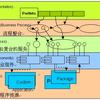Intrusion detection systems (IDS) are crucial security measures nowadays to enforce network security. Their task is to detect anomalies in network communication and identify, if not thwart, possibly malicious behavior. Recently, machine learning has been deployed to construct intelligent IDS. This approach, however, is quite challenging particularly in distributed, highly dynamic, yet resource-constrained systems like Edge setups. In this paper, we tackle this issue from multiple angles by analyzing the concept of intelligent IDS (I-IDS) while addressing the specific requirements of Edge devices with a special focus on reconfigurability. Then, we introduce a systematic approach to constructing the I-IDS on reconfigurable Edge hardware. For this, we implemented our proposed IDS on state-of-the-art Field Programmable Gate Arrays (FPGAs) technology as (1) a purely FPGA-based dataflow processor (DFP) and (2) a co-designed approach featuring RISC-V soft-core as FPGA-based soft-core processor (SCP). We complete our paper with a comparison of the state of the art (SoA) in this domain. The results show that DFP and SCP are both suitable for Edge applications from hardware resource and energy efficiency perspectives. Our proposed DFP solution clearly outperforms the SoA and demonstrates that required high performance can be achieved without prohibitively high hardware costs. This makes our proposed DFP suitable for Edge-based high-speed applications like modern communication technology.
翻译:暂无翻译




